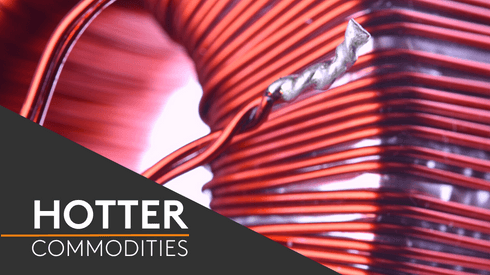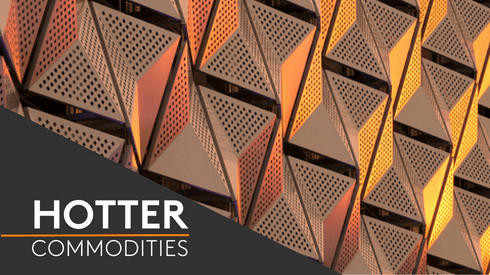Nickel (-2.9%) and aluminium (-1.1%) have been hit the most, which is not surprising after the substantial gains both metals made earlier this week. They remain the star performers in the week to date, with aluminium up around 8% and nickel up about 6% on the week. Zinc, largely flat, is the most resilient of the base metals complex.
Today’s downward pressure across the industrial metals reflects some healthy profit-taking – conservative traders are inclined to lock in some profits by the end of the trading week.
This also coincides with a weaker risk-taking appetite in Asia, as the fall of 1.5% in the Shanghai Composite index indicates. Ongoing trade disputes between the United States and China continue to weight on market sentiment.
Equities in the rest of the world have also come under downward pressure, in part owing the significant acceleration in bond yields – the yield on US 10-year treasuries is above 2.90%, which has forced some portfolios managers to de-risk.
The base metals on the Shanghai Futures Exchange are also under selling pressure this morning, with nickel (-3.3%) and aluminium (-2.1%) the worst performers, while tin (-0.3%) is the most resilient. SHFE base metals prices are underperforming slightly against LME prices in spite of a stronger dollar versus the yuan.
The USD/CNY is at 6.29, up for a second day in a row. The recent weakness in the yuan has been driven by the recent dovish move by the People’s Bank of China earlier this week, that is, a cut in the reserve requirement ratio (RRR) for some banks by 1%, effective April 25.
Copper prices in Changjiang are down by 0.5% at 51,350-51,660 yuan ($8,180-8,229) per tonne and the LME/Shanghai copper arb ratio stands at 7.40, up from 7.37 at the start of the week.
Turning to the precious metals, the complex is marginally lower, with gold (-0.3%) and silver (-0.3%) underperforming the platinum group metals (PGMs), with platinum up by 0.2% and palladium down by 0.1%. This can be attributable to two factors. First, gold and silver tend to be more sensitive to the fluctuations in (real) yields than PGMs. Second, the recent US sanctions against Russia pose a stronger supply risk to PGMs (especially palladium) than gold and silver.
In this vein, it is not surprising that palladium, up nearly 7% on the week, outperforms the rest of precious metals complex. Silver also looks strong, up roughly 4% since Monday, which is primarily attributable to a powerful bout of short-covering (evident in the steep decline in open interest) after speculators became too aggressively bearish on the metal.
The macroeconomic calendar is fairly light today – investors will watch consumer confidence for April in Europe and pay attention to some US Federal Reserve speeches, including San Francisco Fed President John Williams. This could have implications for the dollar and risk sentiment and therefore, on the metals complex.
Base metals may experience more profit-taking today because most investors will be induced to secure some gains by the end of the trading week. Given the substantial gains made recently, industrial metals are likely to see more volatility in the near future. But overall strong fundamentals across various base metals should keep the market in a “buy on the dips” mentality.
Bulls have come back with a vengeance this week after a disappointing absence. In this context, we expect the complex to be much more sensitive to bullish news rather than bearish news. The uptrend is therefore due to continue for longer.
Precious metals may be undermined by the negative macro backdrop characterized by a stronger dollar and higher US real rates over the very short term. PGMs could continue to outperform their complex due to their lower sensitivity to real rates and stronger correlation to base metals.
Silver could also withstand this negative macro environment in so far as its speculative positioning is in process of being normalized so shorts keep covering their positions. Over the longer term, however, we expect real rates to push lower on rising inflation expectations, which should underpin the rally across the precious metals complex.
Metal Bulletin publishes live futures reports throughout the day, covering major metals exchanges news and prices.





